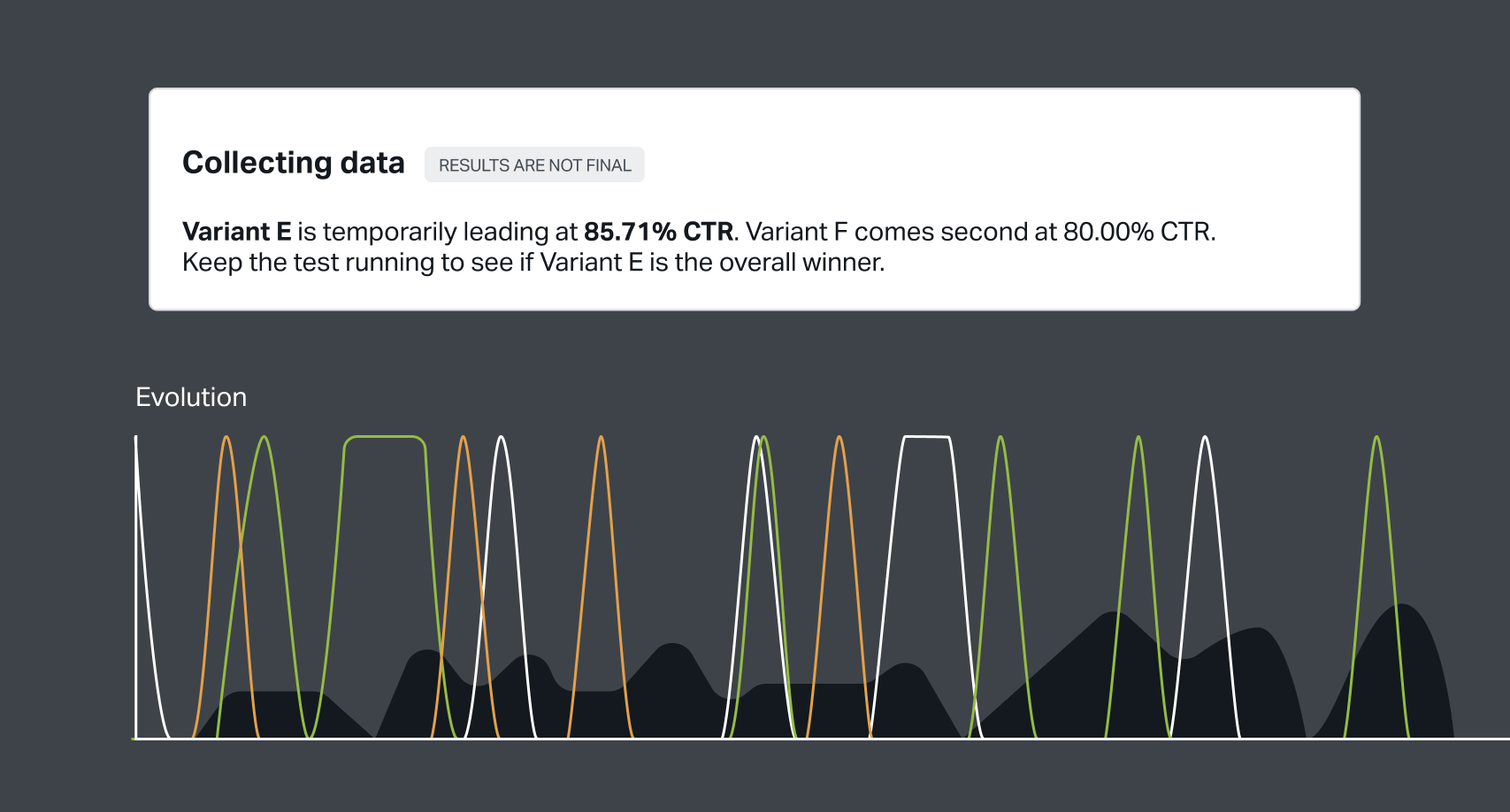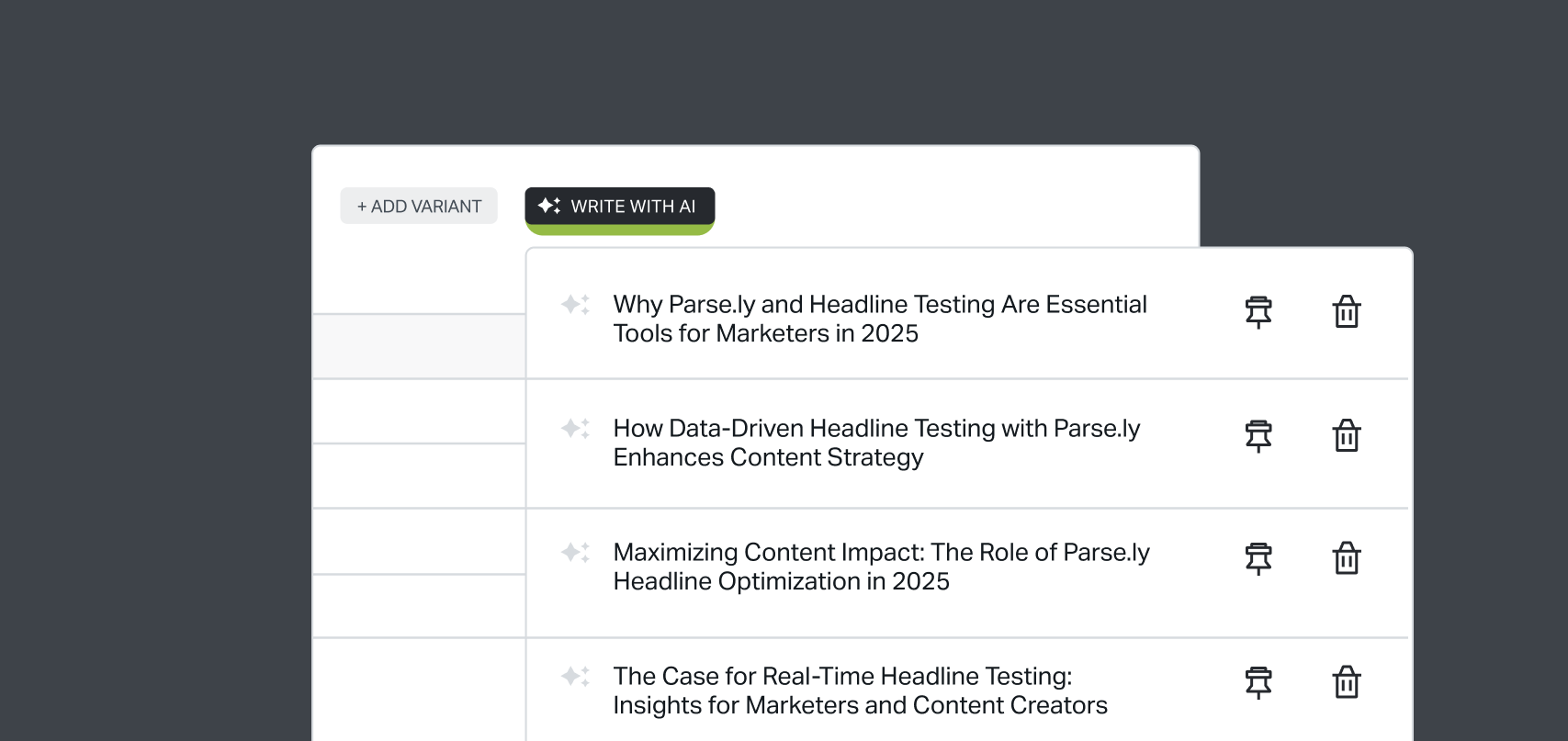In a world where traffic patterns shift quickly, and audience interests evolve overnight, don’t just keep up—outpace competitors relying on gut instinct and slow iteration. Since most editorial teams and content marketers treat headlines as a “one-and-done” decision, missed engagement can cost them dearly.
By embedding AI into your editorial process, you unlock a smarter, faster, more reliable way to ensure your headlines resonate every single time.
PS. We want to know:
What is headline testing?
Headline testing is the process of comparing multiple headline variants to determine which one drives the most engagement—typically measured by click-through rate (CTR). Traditionally, this has involved manual A/B testing: creating two versions of a headline, splitting traffic between them, and waiting days (or weeks) for a statistically significant result.
Modern headline testing, like on WordPress VIP’s Parse.ly’s integration, uses real-time traffic data and machine learning to automatically identify the best-performing headline while the test is running. This gives you faster feedback, more control, and a direct impact on performance.
Traditional A/B testing vs. modern headline testing
| Feature | Traditional A/B Testing | Parse.ly Headline Testing |
| Test speed | Slow, requires full duration | Real-time feedback during test |
| Trafficallocation | Static split, wastes traffic | Dynamic optimization to winners |
| Number of variants | 2 typical | Up to 10 |
| Editorial control | Minimal | Full oversight with fast iteration |
| Reader experience | Can be inconsistent | Maintains continuity |
The problem with traditional headline testing
Traditional headline tests (i.e. standard A/B testing) are quite restrictive: They only allow you to compare one headline to another. Plus, they require a lot of time before you get results. This is especially restrictive for media brands, where headline tests for breaking news are time-sensitive.
Worse, editorial teams find themselves trapped between speed and accuracy, struggling to make confident decisions as traffic spikes and dips.
Common mistakes in headline testing (and how to avoid them)
Even with the right tools, many teams fall into the same traps:
- Testing only two variants. More options = more opportunity to win. Parse.ly allows up to 10.
- Ending tests too soon. Impatience skews results. Let live performance updates guide you.
- Changing test parameters mid-way. Reset or restart if you need to edit variants.
- Not aligning headlines to audience intent. Clickbait may get clicks, but will damage trust.
- Ignoring what the data says. Trust the signals—even if they surprise you.
Parse.ly was designed to help teams avoid these mistakes with confidence scoring, test history, and live feedback.
When and what to test
Parse.ly makes it easy to run headline tests in a variety of use cases:
- Breaking news: Get the most impactful headline in front of readers when attention spikes.
- Evergreen content: Refresh headlines for older high-performing content.
- Campaign landing pages: Optimize click-throughs for paid media or product launches.
- SEO experiments: Test search-optimized headlines vs. curiosity-driven ones.
- Social variants: See which format performs best on different platforms.
Introducing a better way: Parse.ly’s dynamic headline testing
Parse.ly’s Headline Testing flips traditional testing on its head. Here’s how:
Real-time optimization
Instead of waiting for tests to conclude, Parse.ly dynamically shifts traffic toward better-performing headlines right from the start. Readers see the best headlines earlier, maximizing engagement in real-time. And they’ll continue to see the same headline variant throughout their session. It’s not just smart—it’s necessary in a world where seconds count.

Confidence scoring for clear decisions
Every headline variant receives a clear confidence score (High, Fair, Low, or Insufficient), calculated through advanced Bayesian modeling. Even with limited data, you can quickly identify winners and losers, removing guesswork, and boosting editorial confidence.

AI-driven creativity
Stuck in a headline rut? Parse.ly’s AI generator creates relevant headline variants instantly. Each variant’s performance is tracked separately, giving you clear insights into human vs. AI-written headlines over time.
Plus, both AI and humans will improve at writing original headlines and variants with learnings from what works best for your audience.

Real results from real teams
Teams already seeing transformative results:
The Times experienced a remarkable 23% CTR lift after testing headlines dynamically during peak traffic.
MSNBC’s platform team said, “I don’t think you understand how exciting this is for our team,” praising Parse.ly’s streamlined, flexible testing process.
Hip2Save anticipates Parse.ly resolving sponsor-driven title debates, expecting improvements for 30–50% of their daily content.
Built for every kind of content team
But it’s not just media brands seeing results. Enterprise teams see higher clickthrough rates on every page.
For newsrooms:
- Lift click-through rates on breaking stories.
- Instantly identify what resonates.
- Eliminate guesswork and increase speed.
For B2B content teams:
- Drive higher conversions from key content.
- Optimize SEO and social-driven headlines.
- Boost visibility and performance of launches.
How headline testing works
- Launch quickly: Set up tests for up to 10 headlines in seconds.
- Optimize instantly: Traffic automatically shifts toward winners as readers engage.
- Stay alerted: Receive instant updates via Slack, email, or browser notifications.
- Maintain consistency: Readers see the winning headline throughout their visit, ensuring continuity.
- Flexible scheduling: Run tests for as short as 15 minutes or up to a week.
How to write better headline variants
Great tests start with great headline ideas. Here are a few quick tips:
- Use numbers or lists (“5 ways to…”)
- Pose a question
- Create urgency or curiosity
- Test tone: formal vs. conversational
- Use emotion or specificity
And remember: with Parse.ly, AI can help brainstorm fresh options based on your content. You’re never starting from a blank slate.
Headline testing for enterprise teams
For enterprise content teams, headline testing isn’t just about clicks—it’s central to conversion rate optimization (CRO). Whether it’s product launches, thought leadership articles, gated assets, or major campaigns, the right headline could turn a user into a first-time web visitor or a high-value lead that drives down CPC.
Parse.ly integrates AI-powered suggestions and real-time optimization directly into your editorial workflow, meaning fewer testing cycles, less guesswork, and significantly improved performance. Align your content strategy directly with measurable business outcomes—such as increased click-throughs, more conversions from landing pages, and better engagement on critical announcements.
Headline testing FAQ
How many headline variants can I test at once?
Up to 10. Bold, subtle, or somewhere in between—it’s your call.
Will readers see different headlines on different pages?
No. Each visitor sees the same headline variant consistently across their session.
Can I set how long a test runs?
Yes. Tests can run anywhere from 15 minutes to 7 days.
Do I need to be technical to use this?
No. Parse.ly is built for editorial teams, with a simple UI.
Is this included in my Parse.ly subscription?
Yes. Headline testing is available to all Parse.ly customers.
Your editorial advantage awaits
Headlines aren’t just the first thing readers see—they’re often the only thing. With Parse.ly’s headline testing, you ensure every headline earns its place at the top.
If you’re already a Parse.ly customer, start testing today.
Not using Parse.ly yet? Request a demo and discover firsthand how smarter headlines drive bigger results.
Your best content deserves headlines that match.
Authors

Jamie Wallis
Product Marketing Manager, WordPress VIP


